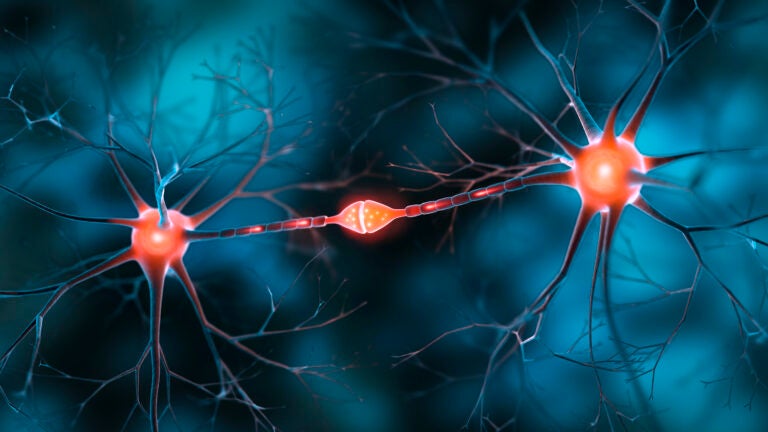Advances in rare disease treatments and clinical trial tools demand new regulatory frameworks, former commissioners say at a USC Schaeffer Center conference.
Category: Uncategorized
Provider misperceptions, not knowledge or profit, drive inappropriate antibiotic prescribing in India
In the sample group, 70% of providers prescribed antibiotics without signs of bacterial infection; among those who knew antibiotics were inappropriate, 62% still prescribed them. (Photo/iStock)
Health
Provider misperceptions, not knowledge or profit, drive inappropriate antibiotic prescribing in India
Overuse of antibiotics can lead to drug-resistant bacteria, “a problem for the whole world, not just India,” study finds.
A USC and Duke University study finds that a persistent “know-do gap,” where clinicians know guidelines but practice differently, is the primary driver of antibiotic overprescribing in India’s private sector — not lack of knowledge, point-of-sale profits or shortages of clinically recommended treatments.
The study appeared this month in Science Advances.
Researchers hope the study will help them find ways to reduce the inappropriate use of antibiotics and fight the global health threat of antibiotic resistance. A related study published last year found a similar know-do gap in the underutilization of oral rehydration salts, the standard of care for childhood diarrhea.
In this experiment, a sample of 2,282 private providers across 253 towns, 70% prescribed antibiotics without signs of bacterial infection, and among those who knew antibiotics were inappropriate, 62% still prescribed them to standardized patients, indicating a large know-do gap.
The study found that closing the know-do gap could reduce inappropriate antibiotic use by roughly 30 percentage points.
Randomized experiments showed that the know-do gap was driven by providers’ beliefs about patient preferences and not profits from selling antibiotics or, in the case of childhood diarrhea, limited supplies of oral rehydration salts.
When patients expressed a preference for oral rehydration salts, inappropriate antibiotic use fell by 17 percentage points on average, with especially large reductions among pharmacies. By contrast, removing point-of-sale financial incentives and supplying oral rehydration salts had no meaningful effect on antibiotic prescribing.
A choice experiment with 1,189 caregivers further found that patients did not prefer providers who give antibiotics over those who provide oral rehydration salts, underscoring the misalignment between provider perceptions and actual patient preferences.
Knowing one thing, doing another
“Our data reveal a striking disconnect: Clinicians know antibiotics are wrong for most diarrhea cases, yet they prescribe them anyway because they think parents expect ‘strong’ medicines,” said corresponding author Zachary Wagner of the Center for Economic and Social Research at the USC Dornsife College of Letters, Arts and Sciences. “Correcting that perception offers the biggest win for global antibiotic stewardship.”
“A lot of children are given antibiotics when they don’t need them, and that can lead to drug-resistant bacteria — a problem for the whole world, not just India,” said co-author Neeraj Sood of the USC Schaeffer Center for Health Policy & Economics and the USC Price School of Public Policy. “By showing that patient-provider communication trumps financial motives, we give policymakers a laser-focused lever: help doctors understand real patient preferences.”
The authors note that the largest know-do gaps were among less formally trained providers and pharmacies, where preference signaling by patients yielded the biggest improvements, suggesting targeted interventions could deliver outsize benefits.
“Pharmacies and informal providers, often the first stop for care, showed the largest know-do gaps,” noted co-author Manoj Mohanan of Duke University. “Interventions that empower caregivers to voice a preference for oral rehydration salts, or public campaigns signaling that parents don’t demand antibiotics, could slash misuse at scale.”
About this study: In addition to Wagner, Sood and Mohanan, other authors of the study include Somalee Banerjee of Kaiser Permanente in Oakland; Jagadish Krishnappa and Sumeet Patil of NEERMAN in New Delhi, India; Arnab Mukherji of the Indian Institute of Management in Bengaluru; and Rushil Zutshi of the National Bureau of Economic Research.
The study was supported by a grant from the National Institute of Diabetes and Digestive and Kidney Diseases (5R01DK126049).
USC researchers win $8 million NIH grant to pursue novel Alzheimer’s drug
(Illustration/iStock)
Health
USC researchers win $8 million NIH grant to pursue novel Alzheimer’s drug
By focusing on a trigger of brain inflammation, scientists are in pursuit of a new drug therapy and now understand why some with a key risk factor for the disease develop dementia.
Backed by the combined expertise of three USC schools, scientists are developing a new drug aimed at a previously unexplored biological target in Alzheimer’s disease, aided by an $8 million grant from the National Institutes of Health.
The team, led by Hussein Yassine of the Keck School of Medicine of USC, is investigating why some carriers of the APOE4 gene — the strongest genetic risk factor for Alzheimer’s — develop dementia while others remain cognitively healthy.
“Our lab has identified an enzyme that predisposes the brain to inflammation,” Yassine said. “The challenge now is to find a drug that can block it without harmful side effects.”
Their work points to an enzyme which breaks down protective omega-3 fatty acids in the brain and triggers damaging inflammation.
Partners across the university
To tackle that challenge, Yassine partnered with Vsevolod “Seva” Katritch of the USC Dornsife College of Letters, Arts and Sciences and the USC Michelson Center for Convergent Bioscience. Katritch’s lab is using a combination of artificial intelligence and physics-based tools to scan billions of small molecule candidates to find those that can penetrate the brain’s protective barrier and fit into the enzyme’s active site, like a key in a lock.
“We’ve developed computational tools that allow us to do it very fast,” said Katritch, who uses a computational platform that he developed called V-SYNTHES. “This actually got us to pre-clinical candidates in less than two years.”
The third arm of the collaboration is led by pharmacologist Stan Louie of the USC Alfred E. Mann School of Pharmacy and Pharmaceutical Sciences who is guiding the transition from laboratory discovery to a safe medication. He determines how the drug behaves in the body: how it’s metabolized, how it’s eliminated and whether the drug works as intended or poses potential risks. All are key steps before advancing testing to phase 1 clinical trials in people.
Kai Chen, a professor of research radiology at Keck School of Medicine, leads the team that is capturing images of the drug’s impact on brain inflammation.
Alzheimer’s disease affects about 6 million Americans and costs the U.S. economy an estimated $320 billion annually. Despite decades of research, the few approved drugs have only a modest impact on the amyloid plaques or tau tangles that are hallmarks of the disease. The USC researchers hope that targeting brain inflammation will offer a new therapeutic pathway.
The grant award, spread across five years, is a windfall for Yassine’s project. He’s been exploring the role of the enzyme known as “calcium-dependent phospholipase A2,” or cPLA2, for about a decade. As his team studied differences in APOE4 gene carriers, they found that the ones with elevated levels of cPLA2 were the ones who developed dementia.
Yassine wondered why no one else had explored this pathway; after a deep dive into the scientific literature, he found out that cPLA2 belongs to a family of enzymes that look very similar.
“And drugs developed to date are not very selective, so if they can inhibit this enzyme, they might, at higher doses, inhibit the neighboring enzyme,” Yassine said. “And the other enzymes are quite essential — so if you inhibit them, you’re going to have problems, for sure.”
Narrowing the field
With help from the Katritch Lab, Yassine has narrowed the field of possible drug formulations to target cPLA2 selectively. He’s now on the third generation of possible candidates and homing in on one that would be good enough for a pharmaceutical company to take to clinical trials.
“Using support from NIH, we are translating these discoveries into a drug that can get into the clinic,” Louie said. “Ultimately, we want to know if inhibiting inflammation can reduce the impact of Alzheimer’s disease.”
In recent work, Yassine’s team found that when they blocked cPLA2 in models of Alzheimer’s disease, they not only enhanced the beneficial action of omega-3 fatty acids in the brain but also repaired the blood-brain barrier. Other Alzheimer’s studies have shown that leaky blood vessels in the brain slow down blood flow and let harmful substances leach into brain tissue.
If successful, the project could yield the first brain-penetrant, highly selective inhibitor of cPLA2, opening a new chapter in the treatment of neurodegenerative disease.
“It takes a team to turn discovery into hope,” Yassine said.
Trojan honored by American Society for Bone and Mineral Research
Doctoral student Shuwan Liu receives a 2025 Young Investigator Award for her work examining which signals drive cells to heal large-scale bone injuries.
Study identifies three deadliest risk factors of a common liver disease
Patients with a chronic liver disease known as MASLD who have high blood pressure, pre-diabetes/diabetes or low HDL cholesterol are at greatest risk, USC researchers find.
Keck Hospital of USC honored for quality care for third year in a row
The hospital is a recipient of Vizient’s Birnbaum Quality Leadership Performance award, which recognizes top performers’ quality of patient care.
Keck Medicine of USC honored at Los Angeles health care awards
The health system takes home three top honors and three finalist awards.
Despite relaxed prescribing rules, opioid addiction treatment is still hard to find at pharmacies
Only 4 in 10 U.S. retail pharmacies carry buprenorphine, USC research finds, with access even more limited in Black and Latino communities.
Study reveals how HPV reprograms immune cells to help cancer grow
STORY AND VIDEO: By uncovering how cervical and throat cancers linked to HPV evade the immune system, USC researchers open the door to new treatment strategies.
USC Bovard Scholars gain hands-on health care training at USC Verdugo Hills Hospital
The medical center’s Healthcare Day of Discovery offered participants personalized career exploration opportunities.